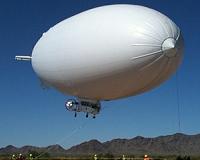| . |  |
. |
Grand Isle, Louisiana (AFP) July 6, 2010 She is not among the US medics in Afghanistan, but Heather Nevill still performs a vital battlefield triage, on the front lines of a war raging on America's doorstep. With crude oil lapping at shorelines from Louisiana clear across to Florida, the veterinarian if helping save wildlife along this fragile part of the Gulf Coast after the worst environmental disaster to strike the United States. "We're essentially the emergency room of the oil spill," says Nevill from the International Bird Rescue Research Center (IBRRC) as she surveys the small clean treatment area inside a metal trailer. An examination table stands against one wall, and opposite that stand neat shelves of medicines, absorbent pads, protective covering, bleach, garbage bags -- even pink bottles of Pepto-Bismol, the indigestion-reliever. "It's important to coat the intestines of distressed birds," she says, "to relieve any ulcers or prevent ingested oil from affecting the G.I. tract." The workers and volunteers, sometimes in protective suits and elbow-length rubber gloves, are all business as they hose down and scrub the oiled animals, often with the care of a nurse cradling a newborn baby in a maternity ward. Just outside the trailer, strong winds and thunderstorms continue to buffet the coast, adding to the tension as clean-up efforts have ground nearly to a halt. The massive Gulf of Mexico spill grows by the miniute and rough seas have kept not only oil skimmers off the water and clean-up crews off beaches; they have also stymied efforts to rescue distressed animals. "We're shut down," says Nevill. "The Coast Guard has put out a small craft advisory, so our boats can't get out there" to rescue the region's precious wildlife. Since mid-May, nearly 500 animals have come through this veterinary center 40 miles (64 kilometers) south of New Orleans, which specializes in stabilizing oiled and injured animals so they can be transported to a larger rehabilitation site at Fort Jackson. Brown pelicans -- removed from the endangered species list just last November -- as well as terns, sea turtles, and diamondback terrapin are among the many patients that Nevill has assisted. Heavily oiled animals can die from exposure, even in the warm Gulf climate, by ingesting the toxic crude, or by drowning. One wildlife expert in Louisiana has likened oiling to trying to swim while wearing a raincoat. The IBRRC has vast experience rescuing wildlife from dozens of oil spills dating back to 1971, but they have never worked in an ecological disaster of this magnitude. "There are no estimates as to how long we're going be here," says Nevill. "The law says that BP has to pay for the treatment of animals affected by their spill, and that's exactly what we're doing. We're an extremely flexible organization. We can be wherever we need to be in Louisiana." Across the bay, field biologist Suzy Delaune of Lousiana's Department of Wildlife and Fisheries responds to a call about a distressed porpoise. With her curly hair blown about by gusty weather, she scans the water from the shoreline, looking for the animal and talking with witnesses who saw it languishing on its side in shallow water. "I wish we could get a boat out there," Delaune says, squinting into the rain. "It would be nice to rescue the animal instead of waiting for it to wash ashore in a couple of days," she says. Randy Wells, a visitor to the island, had spotted the porpoise from a fishing pier. "It just makes you sad to see something like that," he says. Despite the marine mammal's grim fate, Delaune says the number of oil-related deaths to date among wildlife in Grand Isle has remained relatively low. She points to a high success rate in capturing and rescuing distressed animals, and sending them to places like Nevill's makeshift center for rehabilitation. "We patrol every day," she says. "Our jobs have completely changed from what we used to do before the oil spill." Standing on the oil-splattered shoreline, littered with loose boom and debris swept in on the rough waters, Delaune scans the bay, hoping for some relief -- from the weather, and from the oil gushing from the ocean floor. "All we can do is get out here every day and do our jobs," she says. "The rest is out of my hands."
Share This Article With Planet Earth
Related Links Our Polluted World and Cleaning It Up
 US Navy airship en route to assist Gulf oil recovery
US Navy airship en route to assist Gulf oil recoveryNew Orleans, Louisiana (AFP) July 5, 2010 A US Navy airship was en route to the Gulf Coast on Monday to help recover the massive oil spill fouling once-pristine shorelines, officials said. The MZ-3A Airship, the first to be used in the massive response to the worst environmental disaster in US history, was expected to reach the Gulf Coast on Tuesday, depending on weather conditions, the Joint Unified Command overseeing the efforts s ... read more |
|
| The content herein, unless otherwise known to be public domain, are Copyright 1995-2010 - SpaceDaily. AFP and UPI Wire Stories are copyright Agence France-Presse and United Press International. ESA Portal Reports are copyright European Space Agency. All NASA sourced material is public domain. Additional copyrights may apply in whole or part to other bona fide parties. Advertising does not imply endorsement,agreement or approval of any opinions, statements or information provided by SpaceDaily on any Web page published or hosted by SpaceDaily. Privacy Statement |